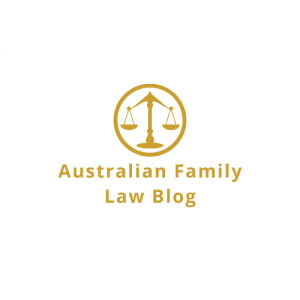Background
In the recent case of Anson & Meek [2017] FamCAFC 257 (7 December 2017) the Full Court of the Family Court of Australia (Murphy, Aldridge & Cleary JJ) heard the husband’s appeal against Judge Hughes’s property order in a case between a childless couple who were married for 5 years. The wife left her job as a CEO (with a salary package of $180,000) to live with the husband in East Asia before the couple returned to Melbourne. The wife had unsuccessfully undertaken IVF treatment during the parties’ pre-marital cohabitation. A year before cohabitation the husband bought a farm in his name for about $1,070,000, contributing $400,000 of his savings to the purchase and borrowing $750,000. He owned 96.5 per cent of “the property of the parties or either of them” at cohabitation. At trial the farm had increased in value to $1,860,000 and total assets in Australia were valued at about $2 million.
The husband owned pre-marital assets in “Country T” of $1.76 million in value which were considered in a separate pool. Judge Hughes assessed contributions as to the $2 million pool as 80:20 in favour of the husband and made a 20 per cent adjustment in the wife’s favour pursuant to section 75(2) of the Family Law Act, being a division of 60:40 overall. The husband appealed.
Full Court Analysis
The Court stated an ultimate finding that during the relationship contributions should be assessed as equal.
The Court relied on the decision of Watts J in Lee & Hutton [(2013) 50 Fam LR 322] that the (distressing and difficult) steps undertaken by the wife in seeking to become pregnant, and in particular the failure of those attempts, ‘ought to be taken into account as contributions’.
One part of that contribution is not embraced by the ultimate finding of equality of contributions during the relationship because it falls within the pre-cohabitation period: the wife sought to become pregnant, but failed in mid-2007, some nine months before the parties married.
The second finding also occurred pre-cohabitation. Her Honour found that the wife made a non-financial contribution to the acquisition of the farm by providing advice as to its purchase as ‘she had expertise in the area’ and ‘made suggestions about boundary surveys, Occupational Health & Safety issues and insurance’.
Thirdly, her Honour found that the wife’s ‘non-financial contributions continued well after separation in March 2013 as she looked after the farm while the husband was overseas in May, July and October 2013’.
No ground of appeal related specifically to contributions during the post separation period but, in the Court’s respectful view, the husband’s contributions during that time were a very relevant consideration but were not at all referred to by her Honour in the reasons.
The fourth finding fell outside the rubric of equal contributions made during cohabitation related to the husband’s direct financial contribution to the farm. He contributed about $400,000 in cash to its purchase. Her Honour described the husband’s direct financial contribution as ‘overwhelming’ and ‘significantly greater’ than the wife.
Expressed in percentage terms, the husband held 96.5 per cent of ‘the property of the parties or either of them’ at the commencement of cohabitation and the wife 3.5 per cent. The nature of the parties’ respective interests in property did not change during the parties’ five year cohabitation.
Property Value Increase
Her Honour was, of course, entitled to take account of the increase in the value of the major asset the subject of the proceedings and to take account of the contributions of all types made by each of the parties (including, of course, indirect financial contributions and contributions, relevantly, as a homemaker) during the period in which the value increased. It was held that Her Honour, however, considered only one such matter: the equal contributions that each party made during their relationship; in the Court’s view her Honour did not at all take account of other relevant considerations in that respect.
The farm was purchased by the husband about a year before cohabitation commenced. The increase in value embraced a period of about eight and a half years which included the period of cohabitation and the approximately two and a half year post-separation period (which represented about 30 per cent of the cohabitation period). Obviously, contributions made by the wife, equal to those made by the husband, during the period of cohabitation were also relevant to the increase in value over the whole of the eight and a half year period. However, the Court was unable to see how the contributions made during nearly a third of that period, when the husband occupied the farm, could be assessed as anything other than favouring the husband.
The increase in value of the farm and the finding which her Honour made in respect of it were central to her Honour’s ultimate percentage assessment of the respective contributions of the parties. Respectfully, those findings failed in the Court’s view to take account of the material relevant considerations to which the Court referred.
The Court was also of the view that her Honour failed to take account more broadly of the contributions of all types made by each of the parties in the two and a half year post-separation period which, in the context of a marriage of this duration, were very relevant.
Orders
The appeal was allowed and the matter remitted for rehearing.
